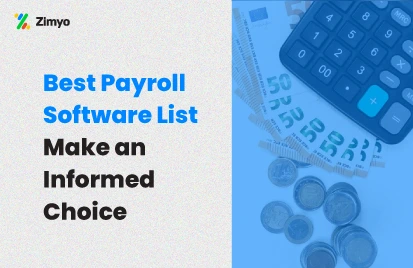Before understanding the salary structure of an employee it’s important to understand what is salary? A salary is not just a number. It is the combination of various factors that meet to form a wage. A cost to the company, or CTC, is an employee’s annual employee package and consists of various factors, which include gross salary, net salary, deductions, allowances, and prerequisites.
Calculation of Salary

There are multiple components in a salary, which constitute its structure. These components include factors such as tax, conveyance allowances, fringe benefits, HRAs, and other factors. The calculation of CTC includes all of these factors and can be calculated by using a simple formula.
CTC is calculated by the addition of gross salary and benefits. This simple formula has multiple parts inside it and includes all of the factors. Gross salary includes allowances and the monthly wage of an employee. It is also important to understand why, in the calculation, we use gross salary and not the net salary.
Components of Salary
The various components of salary includes benefits (part of employee give-back programs and other company-related benefits) and the gross salary (composed of elements like the basic salary, HRA, and allowances given by companies) which are defined as follows:
1. Net Salary
Net salary, not to be confused with a gross salary, is the wages an employee received after all deductions and additions. Specifically, the net salary is synonymous with the CTC, which means that it can be used interchangeably, that’s why it is important to use gross salary instead of net salary.
2. Gross Salary
The gross salary is simply called as salary, without any additions or deductions. Simply, it is the amount of money that an employee earns monthly, or yearly. There is an exception, however, gross salaries often contains certain additions like HRA and allowances. HRAs (Housing Rent Allowance) simply are rent assistance where companies provide certain amount of money to an employee to aid them with paying their rent and locational assistance. Allowances provided by companies like HRAs don’t include other additions.
3. Benefits
The organization also offers benefits to the employees, which adds up to the net salary, or CTC of an employee’s salary. These benefits can be indirect or direct, with the latter involving bonuses, raises, and extra money, and the former involving technology items commissioned by a company, which could include items like laptops, phones and iPads, and even transport items in some cases. These benefits also might include other items, like allowances. These allowances range from medical allowances to conveyance allowances which aid an employee with their transport and their healthcare, protecting KT (key talent) employees to make sure they are taken off.
4. Bonus
Bonus refers to the amount received by employees from their employer for working hard in the organization. The major purpose to provide bonus to employees is to appreciate their efforts and value their contribution in the company.
5. Gratuity
Gratuity is the amount received by the employee from their employee when the employee has served the organization for 5 or more years. This is a lump-sum amount paid to the employees to value the services provided by them in the organization.
6. Provident Fund
Provident Fund is a saving fund developed for employees to provide them financial assistance to help them in the time of need. In provident fund some proportion of amount is deducted from the employee’s salary while rest of the amount is contributed by the employer.
How to calculate the salary package of an employee?
A salary package, or the wage of an employee, includes deductions and additions, simply calculated as the Gross Salary + Benefits. This takes into account the gross salary which is composed of the various benefits such as HRAs, allowances, and the basic salary of an employee. These benefits include direct and indirect benefits, which are also known as direct and indirect compensation to the employee, which involves overtime, bonuses, medical, dental, vision, transport, and other non-monetary benefits. All of these factors, aggregated together creates a salary package of an employee.
Insights into the Salary Structure
Typically, all of the factors mentioned before have to be closely monitored and tailored before an employee’s salary is calculated and finalized. The monetary aspect, which deals purely with gross salary, is not the only aspect which goes into a salary structure. The benefits – in the form of indirect and direct benefits – helps in employee retention, provides them incentives to work hard, and helps to aid and retain key talent. An employee might get more benefits as compared to their gross salary, while another might get a higher gross salary with lesser benefits. This is because different employees have different needs, and have CTCs tailored to them. For example, the employee getting more benefits might need to be retained more, and the incentives in indirect benefits might aid them more. An employee who is a contractual worker, and has enough incentives, will have a CTC more tailored towards the gross salary.
Manage employee's salary in a single click!
Conclusion
To conclude, the different parts that constitute a CTC of an employee, and the different components of a gross salary, and benefits, are extremely important when it comes to calculate the salary of an employee. It makes a huge difference when it comes to the retention of the employee, and providing them with incentives.
It becomes important to understand each and every aspect of employee’s salary structure at the time of running the payroll of an employee because payroll helps to provide the salary and benefits to employees at the end of each month to compensate for the services rendered by them.
FAQs (Frequently Asked Questions)
The basic salary structure followed in India is CTC= Basic Salary+ Other Benefits/ Allowances
The salary in India is calculated based on certain factors such as allowances, basic salary and other benefits.
According to the 50 basic salary rule the basic salary of an employee must be equal to at least 50% of employee’s gross salary.
Yes the basic salary of an employee can be 70% of CTC.







